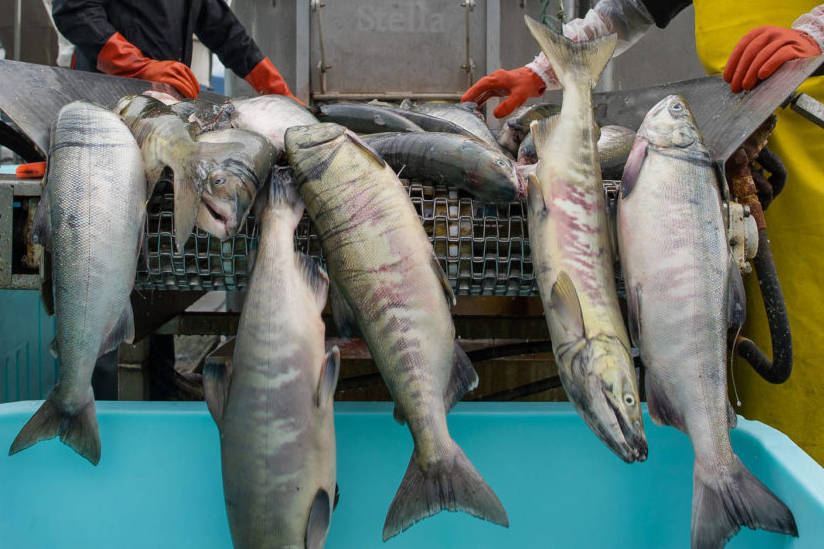Something wonderful happens when you drop a little minnow trap into a creek in Alaska. Chances are good you’ll catch a mess of lively little fish: baby salmon no bigger than your pinkie finger. Salmon start their lives in easily overlooked places like this.
Our youngsters know this first hand – putting on rubber boots and catching little salmon in a nearby stream is a tried-and-true school science lesson that’s taught generations of Alaskans one of the most marvelous stories of the natural world.
As a former state and federal fish habitat biologist, one of my jobs was to ensure that businesses and organizations understood the intricate biology of salmon and worked to protect them in their home habitat as the state grew.
That is why I’m enthusiastically supporting and voting yes on Ballot Measure 1 in November. After years of working under vague state rules that were subject to political influence, Ballot Measure 1 will finally give the state and developers clear guidance on how to “develop responsibly” in Alaska’s productive salmon habitat.
This habitat is the engine that drives our $2 billion fishing economy and the Alaskan way of life tied to salmon.
The ballot measure is the culmination of years of work by experts, fishermen and everyday Alaskans to bring more transparency and a responsible, balanced approach to large-scale development projects. It creates real accountability for foreign mining corporations, by pushing to minimize damage up front and restore whatever disturbances happen to vital wild salmon habitat.
Ballot Measure 1 focuses on major impacts to our salmon habitat.
Here’s why that’s important. Our salmon live out their first year – sometimes their first three years – in lakes, ponds, and rivers and wetlands. These are the fish nurseries we rely on to grow our salmon. Together, it’s this rich mosaic of fish habitat that accounts for our state’s famous salmon wealth.
Our salmon have garnered a lot of attention recently for all the wrong reasons. The reality is our beloved king salmon are in serious trouble. Questions loom about some of our sockeye salmon runs. The Alaska Department of Fish and Game, where I worked for much of my habitat biologist career, reports the salmon harvest is down 30 percent. This has devastated some communities and led to a lot of soul-searching in others.
Naturally enough, people in Alaska are looking for answers. While it’s too early to make any easy conclusions as to why, many agree that changing ocean conditions are an important factor in the declines we’re seeing in our salmon returns.
But that only underscores the need for better salmon habitat protections in Alaska. This is because the healthiest salmon streams will be the most resilient – that is, able to withstand the pressures of challenging ocean conditions and other threats such as warming stream temperatures. They will allow our salmon places to grow to mature and then place to come back and spawn — even in the face of these changes.
We can protect Alaska’s valuable salmon habitat. It’s imperative that we do so: together, sport and commercial fishing are industries employ more than 30,000 Alaskans annually. These remarkable fish are a treasured legacy in Alaska tradition and culture. Their yearly return pays dividends to us all.
Voting yes for salmon on Nov. 6 protects our valuable fish habitat. It’s based on the science lessons Alaskan school kids know by rote: the youngest salmon need a safe nursery where they can get a healthy start on life.
Phil Brna is a retired habitat biologist with the Alaska Department of Fish and Game. My Turns and Letters to the Editor represent the view of the author, not the view of the Juneau Empire.

